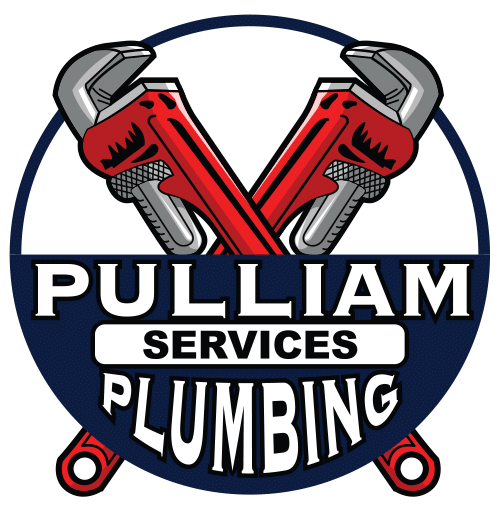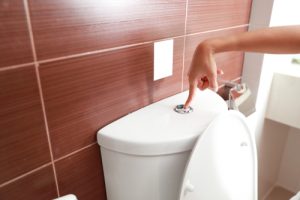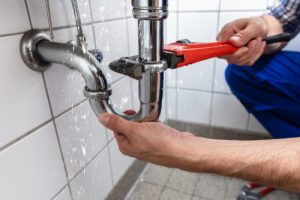Summer storm season in the Texas Hill Country brings unique plumbing challenges for Boerne and Fair Oaks Ranch residents. Our region’s limestone terrain, clay soils, and aging infrastructure create vulnerabilities during severe weather events. With flash flood potential and severe thunderstorms common during July and August, proper emergency preparedness protects your home and family from costly water damage.
Understanding Hill Country Storm Risks
Flash Flooding and Drainage Issues
The Edwards Plateau’s rocky terrain and shallow soils create rapid runoff during heavy rainfall events. Boerne and Fair Oaks Ranch experience sudden flooding when storm systems stall over our area, with rainfall rates sometimes exceeding 4 inches per hour. This rapid water accumulation overwhelms municipal drainage systems and can cause basement flooding or sewer line backups.
Power Outage Complications
Summer thunderstorms frequently cause power outages lasting several hours or even days. Without electricity, sump pumps fail, water treatment systems shut down, and well pumps stop functioning. These failures compound during extended outages, creating cascading plumbing problems throughout affected areas.
Foundation and Soil Movement
Our region’s clay soils expand dramatically when saturated, exerting tremendous pressure on foundations and embedded plumbing lines. This expansion-contraction cycle during storm events contributes to slab leak development and can cause sudden pipe failures in vulnerable areas.
Pre-Storm Preparation Checklist
Essential Emergency Supplies
Maintain a waterproof emergency kit containing pipe repair clamps, plumber’s putty, adjustable wrenches, and waterproof flashlights. Include the contact information for reliable emergency plumbing services and know the location of your main water shutoff valve.
Stock bottled water for drinking and basic sanitation needs – aim for one gallon per person per day for at least three days. Include water purification tablets or portable filtration devices for extended outages.
Drainage System Maintenance
Clear gutters, downspouts, and storm drains before storm season arrives. Blocked drainage systems increase flooding risk and can force water into areas where it damages plumbing systems or creates foundation problems.
Inspect and clean floor drains in basements, garages, and utility rooms. These drains often clog with debris and fail when needed most during storm events.
Backup Power Considerations
Consider portable generators or battery backup systems for critical plumbing components like sump pumps and well pumps. Ensure generators remain outdoors and away from windows to prevent carbon monoxide poisoning.
Test backup systems monthly during storm season to ensure reliable operation when needed. Include fuel storage and maintenance supplies in your emergency preparations.
During Storm Events
Water System Protection
Shut off electricity to water heaters, well pumps, and other electrical plumbing components during severe thunderstorms. Lightning strikes can damage these systems and create safety hazards.
Monitor basement areas for signs of water intrusion and be prepared to shut off main water supplies if flooding threatens electrical components or creates contamination risks.
Immediate Response Protocols
Know how to quickly shut off your home’s main water supply and individual fixture shutoffs. Practice these procedures during calm weather so family members can respond quickly during emergencies.
Document any plumbing damage with photos for insurance purposes, but prioritize safety over property protection during active storm conditions.
Safe Water Practices
Avoid using plumbing fixtures during the height of thunderstorms, as lightning can travel through metal pipes and create electrical hazards. This includes avoiding showers, dishwashing, and laundry until storms pass.
If you suspect contamination of your water supply due to flooding or power outages, use bottled water for drinking, cooking, and personal hygiene until professional testing confirms safety.
Post-Storm Recovery
Damage Assessment Priorities
Once conditions are safe, inspect your property systematically for plumbing damage. Check for obvious leaks, foundation cracks, or signs of water intrusion that require immediate attention.
Test water pressure and quality before resuming normal usage. Changes in pressure, color, or taste often indicate damage to supply lines or contamination that requires professional evaluation.
Professional Inspection Needs
Schedule professional plumbing inspections after major storm events, even if no obvious damage is visible. Hidden damage to sewer lines, foundation pipes, or water treatment systems often develops during storms but doesn’t become apparent until later.
Insurance and Documentation
Contact your insurance company promptly to report storm-related plumbing damage. Maintain detailed records of damage, temporary repairs, and professional services required for restoration.
Special Considerations for Hill Country Properties
Well Water Systems
Private wells face unique storm-related challenges, including power outages, contamination risks, and equipment damage. Install surge protectors for well pump electrical systems and consider backup power options for extended outages.
Test well water quality after significant storm events, as flooding and power disruptions can introduce contaminants or affect treatment system performance.
Septic System Protection
Properties with septic systems require special attention during storm events. Avoid excessive water usage during and immediately after storms to prevent system overload when soil absorption capacity is reduced.
Schedule septic inspections after major flooding events, as saturated soils can cause system failures or contamination issues that require professional remediation.
Commercial Property Considerations
Business owners face additional challenges during storm events, including potential customer and employee safety issues, inventory protection, and business continuity concerns. Develop comprehensive emergency protocols that address plumbing system protection while ensuring personnel safety.
Consider water damage insurance coverage specifically designed for commercial properties, as standard policies often exclude certain types of storm-related plumbing damage.
Building Long-Term Resilience
Infrastructure Improvements
Consider upgrading older plumbing systems with materials better suited to our challenging environment. Modern PEX piping offers superior flexibility during soil movement events, while upgraded water heaters include enhanced safety features for storm conditions.
Professional Partnerships
Establish relationships with reliable local contractors before emergencies occur. Pulliam Plumbing provides 24/7 emergency services throughout Boerne and Fair Oaks Ranch, with over 15 years of experience handling storm-related plumbing emergencies in our unique Hill Country environment.
Emergency preparedness requires ongoing attention and regular updates to remain effective. Review and practice your emergency procedures annually, updating supplies and contact information as needed. Proper preparation minimizes storm damage and protects your family’s safety and comfort during challenging weather events.
Remember, when plumbing emergencies strike during storms, professional help may be delayed due to weather conditions and high demand. Your preparedness efforts bridge the gap until professional assistance becomes available.




